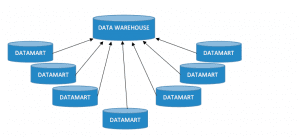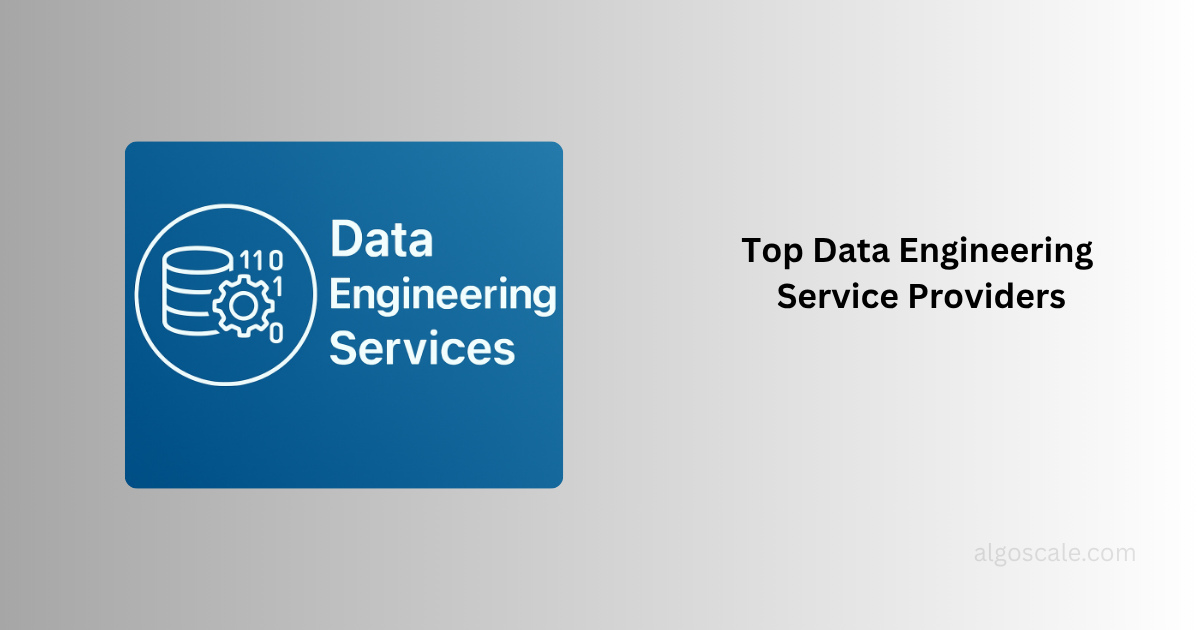When it comes to e-commerce, online retailers have a significant advantage over their physical counterparts. And that is access to big data.
Today, online eCommerce retailers can easily measure every aspect of their customers’ interactions with their brands and get access to huge amounts of data. This data can further help e-retailers optimize costs at each stage of the operational cycle and deliver a highly personalized customer experience.
But despite this, many online retailers fail to take their business to the next level. Do you know why? Well, it’s because they fail to make sense of all the gathered data.
A lot of times, the accumulated data remains in a network of silos. Essentially, it means it stays on different platforms such as Google Analytics or Shopify without coming together to create a single source of truth and deriving crucial customer insights.
This is where data warehousing for e-commerce helps!
In this article, we will help you understand all about data warehousing for e-commerce and how you can create one such solution for your business. So, let’s begin.
Benefits of Data Warehousing for eCommerce
eCommerce data warehouses help to gather, optimize, and store information about your customers, which is fundamental to understanding What is Ecommerce Personalization. They aggregate business data from multiple sources (CRM platforms, ERP solutions, third-party logistics, external public sources, etc.) into a centralized and homogenous repository. This data is then analyzed using analytical tools to reveal important customer insights and make informed business decisions.
Warehousing for e-commerce can benefit businesses by facilitating:
-
Predictive analytics –
Predictive analytics is on the rise. As per statistics, the global predictive analytics market is anticipated to reach $22.1 billion by 2026, growing at a CAGR of approximately 24.5%.
Predictive analytics helps eCommerce businesses to forecast customer buying trends, identify the most suitable marketing channel, predict customer behavior, and offer the right products at the right time.
-
Customer segmentation –
Data warehousing solutions can help to categorize customers into different segments, based on their position in the buying funnel. Retailers can use this information to send targeted messages to each customer and further push them down into the funnel.
-
Optimize marketing campaigns –
Once you have a more precise view of your customer segments, you can identify more accurate targets for your paid ads. Additionally, you can conduct A/B split testing on each part of your campaign to determine what is working and what is not.
-
Attribution modeling –
Attribution modeling lets you tag or label your incoming revenue with its appropriate source. Thus, you can identify which channels are offering the best results and accurately measure internal ROI.
Different Components of a Data Warehouse
As the data enters eCommerce data warehouses, it is analyzed based on how structured it is, processed, and transformed for analysis.
Typically, it goes through the following key components:
-
Principal database:
This is a central repository that serves as the basis of data warehousing for e-commerce and stores and manages all data.
-
ETL tools:
This stands for Extraction, Loading, and Transformation. With ETL tools, data is extracted from the main database, transformed to match the format of other information, and then prepared for analysis.
-
Access tools:
These tools interact with all the accumulated data to conduct analysis, data mining, or even visualization.
-
Metadata:
Metadata is a small piece of information that adds context to the data present in your warehouse. This metadata defines sources, values, location, and other data attributes.
All of these components come together to create one system engineered for quick access to any query result and effective in-depth data analysis.
Steps for Creating a Data Warehouse for e-commerce
Now, let us understand the different steps to create the best data warehouse solution for your e-commerce business.
-
Define the data sources and metrics you want to move
This is the first step to creating data warehousing for e-commerce. There are plenty of different types of data derived from different sources. You need to first decide on the type of data that you want to relocate to your data warehouse for further analysis. Although data warehouses can easily handle large amounts of data, storing unnecessary data will result in higher costs.
So, start by finalizing the data you want to store in your warehouse and for how long. This data can be structured, unstructured, or semi-structured, and come from sources such as internal applications, external systems, customer-facing apps, etc.
-
Select the right data warehousing tools
Earlier, businesses had to develop complicated infrastructures to create a data warehouse. But today, with the advancement in cloud technology and automated tools, the effort and cost required to get started with smart data warehousing are considerably reduced.
Cloud-based e-commerce data warehouses are quick, flexible, cost-efficient, and highly scalable. When choosing a solution for your business, make sure to select a platform that automatically updates all data to a central location for you to view and access. This ensures a steady flow of clean and fresh data that is ready for analysis.
Some of the most popular data warehouse solutions include Google BigQuery, Amazon Redshift, Microsoft Azure Synapse, Snowflake, Teradata, and Amazon DynamoDB.
3. Move data to your destinations
Moving your data from different sources to the warehouse destination necessitates you constructing a data pipeline, which is an automatic connection between the source and the destination that transfers your data at particular intervals.
High-quality pipelines ensure that data in your dashboard and warehouse is always up-to-date. It also saves a considerable amount of time that would otherwise be spent in moving data manually.
The turnaround time for the complete deployment of an e-commerce data warehouse is between 3 and 12 months.
Data Warehousing for eCommerce ROI
A data warehouse is a significant investment. However, the returns that your eCommerce business can reap in terms of business intelligence are simply invaluable. eCommerce data warehouses provide smarter insights into your internal operations, helping you make better business decisions and reduce the overall risk.
Here are a few factors that govern the cost of data warehouse deployment. You can evaluate these costs to make sure to obtain the highest ROI on your investment.
-
Cost of data storage
You can choose between a cloud-based and an on-premises data warehouse. A cloud-based solution is provisioned to you over the Internet, whereas you have to purchase and maintain an on-premise data warehousing solution yourself.
In general, cloud-based data warehouse solutions are cheaper as they don’t require any investment in hardware, on-site staffers, or even space for equipment. Typically, cloud-based solutions such as Amazon Redshift, Snowflake, and Google BigQuery cost around $18 to $84 per terabyte per month. On-premise solutions, on the other hand, may cost up to $1,000 per month.
-
BI & visualization software
Data warehouses are much more impactful when paired with good business intelligence software. As per statistics, a BI solution can cost up to $3,000/ year on average, with a high end of $6,000 and a low end of $600.
-
ETL Software
Transferring the data from various source locations to a single target destination happens through ETL tools. The cost of these ETL tools will depend on the platform that you select. Typically, every ETL tool supports a varied suite of databases, so you want to be sure that your solution will align with the data format you want to store in your warehouse.
-
IT Staff
When it comes to data warehousing for e-commerce, you need to find the right people to manage things. Some of the roles that you must fill include Backend Developer, Information Systems Manager, Database Architect, and Data Analyst. Their salaries are another added expense that you need to bear for deploying a data warehouse for your e-commerce business.
How Can Algoscale Help in Your E-commerce Data Warehouse?
Algoscale is a leading data warehouse service provider that has been assisting companies to gather all their data in one place and optimize it for reporting and analytics. Our data warehouse experts possess in-depth knowledge of creating ETL processes that load data from various source points into the data warehouse and streamline it to deliver effective results.
Recently, Algoscale helped one of its clients make the most of its conversational messaging platform. With over 9 billion messages sent each month, the client’s messaging platform handled data coming from multiple sources such as S3, MySQL, log files, etc.
However, even after deploying many chatbots, the platform wasn’t able to derive meaningful insights. The experts at Algoscale developed a robust data warehouse and launched a set of nodes called the Amazon Redshift cluster. They developed an automated data pipeline that loaded all data from S3 files into Redshift and used it for further reporting and data warehouse analytics.
Click here to read more.
Conclusion
When it comes to data warehousing for e-commerce, companies have two options:
- Go for a proprietary SaaS solution
- Develop a custom data warehouse
While the first option guarantees a shorter timeline, it poses serious challenges in terms of access to technology, data security, and compliance. Custom data warehouses for e-commerce development, on the other hand, offer a scalable solution that is tailored to meet your business’s needs and objectives.
Get in touch with our experts today to learn more about our data warehouse solutions.














